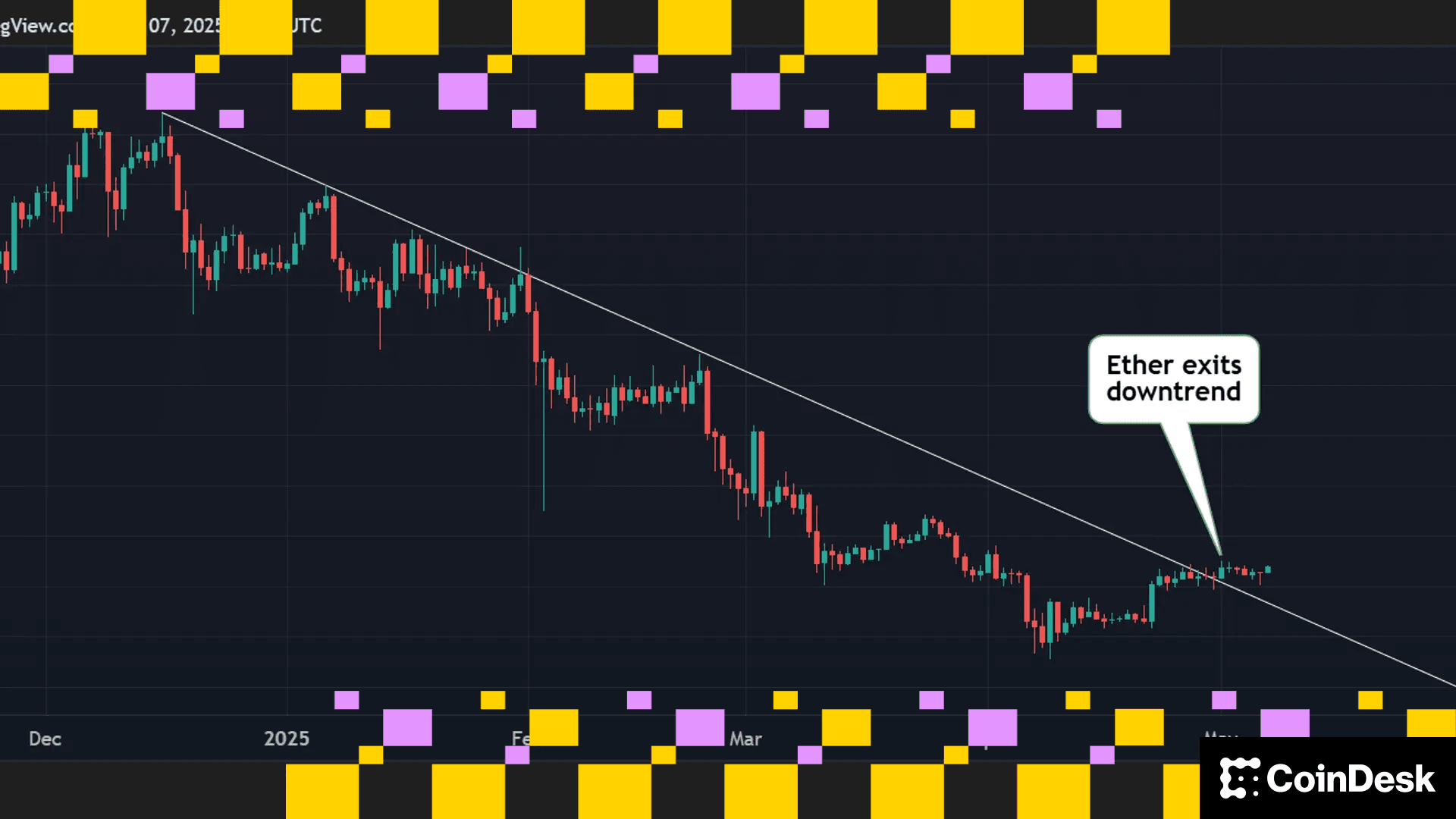MicroStrategy Shares Surge as Michael Saylor Puts Full Focus on Bitcoin
Company operations will now be led by Phong Le, while Saylor will become executive chairman with sole focus on Bitcoin strategy.
MicroStrategy (MSTR) stock is up nearly 15% on Wednesday, helped by a modest rally in bitcoin (BTC) and news late Tuesday that Michael Saylor is stepping down as CEO to become executive chairman. The software company's president, Phong Le, will become CEO.
The management changes will allow for the company's enterprise business to have the full focus of the CEO, with Saylor devoting his energies to strategies for corporate
“In my next job, I intend to focus more on bitcoin,” Saylor tweeted early Wednesday in a tongue-and-cheek response to those who think the moves might mean he has become less bullish on the crypto.
Meanwhile, Le said investors shouldn’t expect any surprises in strategy. On the company’s earnings call late Tuesday, Le said he has been aligned with Saylor on the enterprise and bitcoin strategy throughout their time together. The changes, he said, will free up time for him to run the company. "I would sort of see this as a business-as-usual transition," Le told analysts.
“We think this transition was underway for quite some time with Mr. Le's appointment as president two years ago,” Joe Vafi, an equity research analyst with Canaccord Genuity, told clients in a note Wednesday. “Overall, we don't expect any material change in the strategic direction of the company.”
Vafi rates MicroStrategy a buy, although he did trim his price target to $372 from $453 (current stock price is $317). MicroStrategy stock, said Vafi, is the “most streamlined play” for equity investors to gain bitcoin exposure in the public markets.
Of last quarter's $917.8 million impairment charge on bitcoin holdings during the second quarter, it's "essentially meaningless," said BTIG analyst Mark Palmer, noting it has no impact on the company’s inherent value. "That value can be easily ascertained as it stems from just two sources," said Palmer, "the market value of MSTR’s bitcoin holdings and the value of its enterprise analytics software unit.” Palmer reiterated his buy rating and $950 price target.
Still, the impairment could have had some impact on Saylor's role change, according to some crypto industry participants. "There was no doubt that there was going to be external pressure from stakeholders to see some sort of response from the company," said Tanim Rasul, chief operating officer of crypto trading platform NDAX.
Rasul said Saylor was a key proponent in advocating for corporate bitcoin adoption, although impairment losses may have spooked other publicly traded companies, especially considering the uncertainties across the global economy and markets.
"Michael Saylor’s response was to push himself into an executive chairman role so that a new CEO could focus more on core operations for MicroStrategy," Rasul said, contrasting Elon Musk and his company, Tesla (TSLA), which opted to sell a good chunk of its bitcoin holdings.
Read more: What Tesla’s Big Bitcoin Sale Means for Other Firms Putting Crypto on Their Balance Sheets
UPDATE (Aug. 3, 18:00 UTC): Updates with additional commentary from NDAX's chief operating officer.
Mais para você
Exchange Review - March 2025

CoinDesk Data's monthly Exchange Review captures the key developments within the cryptocurrency exchange market. The report includes analyses that relate to exchange volumes, crypto derivatives trading, market segmentation by fees, fiat trading, and more.
O que saber:
Trading activity softened in March as market uncertainty grew amid escalating tariff tensions between the U.S. and global trading partners. Centralized exchanges recorded their lowest combined trading volume since October, declining 6.24% to $6.79tn. This marked the third consecutive monthly decline across both market segments, with spot trading volume falling 14.1% to $1.98tn and derivatives trading slipping 2.56% to $4.81tn.
- Trading Volumes Decline for Third Consecutive Month: Combined spot and derivatives trading volume on centralized exchanges fell by 6.24% to $6.79tn in March 2025, reaching the lowest level since October. Both spot and derivatives markets recorded their third consecutive monthly decline, falling 14.1% and 2.56% to $1.98tn and $4.81tn respectively.
- Institutional Crypto Trading Volume on CME Falls 23.5%: In March, total derivatives trading volume on the CME exchange fell by 23.5% to $175bn, the lowest monthly volume since October 2024. CME's market share among derivatives exchanges dropped from 4.63% to 3.64%, suggesting declining institutional interest amid current macroeconomic conditions.
- Bybit Spot Market Share Slides in March: Spot trading volume on Bybit fell by 52.1% to $81.1bn in March, coinciding with decreased trading activity following the hack of the exchange's cold wallets in February. Bybit's spot market share dropped from 7.35% to 4.10%, its lowest since July 2023.
Mais para você












